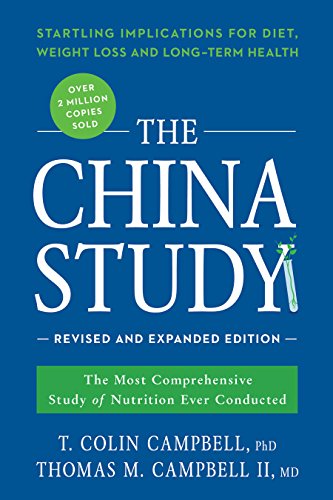

This article is an excerpt from the Shortform summary of "The China Study" by Colin Campbell. Shortform has the world's best summaries of books you should be reading.
Like this article? Sign up for a free trial here .
What is protein-energy malnutrition? Is protein the key to eradicating malnutrition?
Protein-energy malnutrition is a type of malnutrition involving a lack of protein and/or calories in the malnourished person’s diet.
During the 1960s and 70s, experts believed that a deficiency in animal-based protein was the primary cause of malnutrition. Learn why T. Colin Campbell, author of The China Study, thinks that consuming more animal protein isn’t the answer to solving protein-energy malnutrition in developing countries.
Animal Protein: A Solution to Protein-Energy Malnutrition?
Like many researchers, T. Colin Campbell believes that increasing protein options can be an important approach to alleviating protein-energy malnutrition, particularly if people are malnourished because they rely on a single plant source, like potatoes, that may not have all the essential amino acids. But Campbell doesn’t believe that providing more protein is the only (or healthiest) way to improve nutrition in developing countries.
The example below illustrates the problems that come with tackling malnutrition by increasing protein intake.
The Philippines Project
When Campbell worked on this project in the 1960s, protein-energy malnutrition was common. His goal was to help mothers understand what local foods would be the healthiest for their children. Because you can grow peanuts almost anywhere, Campbell and his fellow researchers decided to use peanuts as their primary protein source. But this was problematic.
The Problem with Plant-Based Proteins
Peanuts in the area were contaminated with aflatoxin (AF), a toxin produced by mold. AF is considered one of the most dangerous known carcinogens.
Consequently, the project team had two problems to solve:
Problem #1: Protein-Energy Malnutrition. The goal of the program was to alleviate malnutrition by making sure Filipino children ate as much protein as possible. At the time, it was unquestioned that childhood malnutrition was caused by a lack of dietary protein.
Problem #2: Liver cancer. Aside from being malnourished, many children in the Philippines were getting liver cancer, which is usually rare in children. Campbell discovered that the kids from the wealthiest families, who were eating the most protein, were the ones most likely to get liver cancer. This was counter to Western wisdom that said that the kids eating the most protein should be the healthiest.
The Problem with Animal-Based Proteins
Talking to a local doctor, Campbell found that children in the Philippines were dying of liver cancer before the age of 10. This was alarming. In the U.S., people usually don’t get liver cancer until they’re at least in their 40s.
Unexpectedly, the children who got liver cancer weren’t the most malnourished. They were from the wealthiest families, the ones who could afford to eat meat. They were eating more animal protein than most children in the country.
Common medical wisdom said that animal protein prevented diseases like liver cancer. What was going on? It was when he was contemplating this question that Campbell discovered the Indian study that linked liver cancer with milk protein.
In the study, 100% of the rats dosed with the carcinogen AF and fed high-protein diets got liver cancer. 0% of the rats dosed with AF and fed low-protein diets got liver cancer.
These results were so contrary to the common wisdom that people didn’t believe them. One of Campbell’s prominent colleagues dismissed the study because he assumed that the Indian researchers had mixed up the cage numbers. What they had really shown, he insisted, was that the rats fed high-protein diets were the ones that didn’t get liver cancer, and the ones on a low-protein diet were the ones that did.
But Campbell had seen this pattern in humans, in his work alleviating protein-energy malnutrition in the Philippines, so he didn’t discount the validity of the study’s results. Further, while the Indian study demonstrated the problem with at least one animal-based protein, casein, it seemed to offer a solution to Campbell’s plant-based protein problem, AF contamination: If animal proteins activate AF, perhaps it didn’t matter if you consumed AF in peanuts if you avoided the animal foods that activate it. Maybe the AF in peanuts wasn’t as dangerous as everyone thought it was. Maybe casein was the real danger.
After reading this study, Campbell started his own research to see if and how consuming protein leads to cancer. Campbell was struck by how these findings clarified his hypothesis that protein consumption in the Philippines was somehow related to childhood liver cancer. In trying to solve the protein-energy malnutrition problem by giving kids more animal protein, were Western doctors making Filipino children more susceptible to liver cancer?
Campbell’s Research on Rats and Liver Cancer
Based on the rat study in India and his observations in the Philippines, Campbell developed his own study exploring the relationship between protein and cancer in rats. The program was well-funded for 27 years by respected groups like the National Institutes of Health and the American Cancer Society.
The results both corroborated and expanded on the findings of the Indian study.
Results:
- Low-protein diets kept the carcinogen aflatoxin from causing cancer.
- Low-protein diets kept tumors from growing.
- Casein, which comprises 87% of milk’s protein, caused cancer to develop and spread at every stage of growth.
- Proteins from plants didn’t cause cancer to develop or spread.
- The percentage of animal-based protein that increased the rate of cancer growth in rats was the same percentage regularly consumed by American humans.
Campbell believes that protein from animals is not the best solution to protein-energy malnutrition. He believes that providing a variety of plant-based proteins is a safer way to eradicate protein-energy malnutrition in developing countries.
———End of Preview———

Like what you just read? Read the rest of the world's best summary of "The China Study" at Shortform . Learn the book's critical concepts in 20 minutes or less .
Here's what you'll find in our full The China Study summary :
- Why animal proteins (meat, milk) might cause cancer, diabetes, and other diseases
- Why the medical institution is structured to hide the truth about disease and food
- The precise diet you'll need to eat to live longer and feel happier






